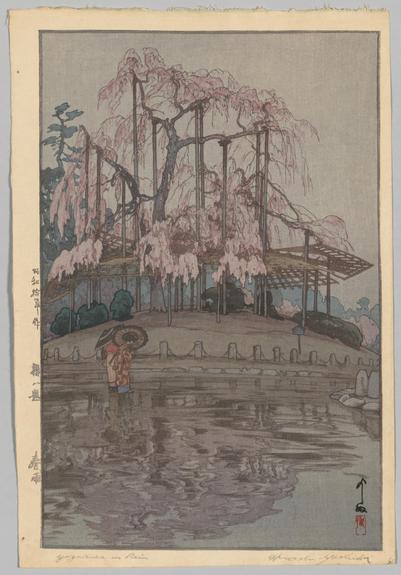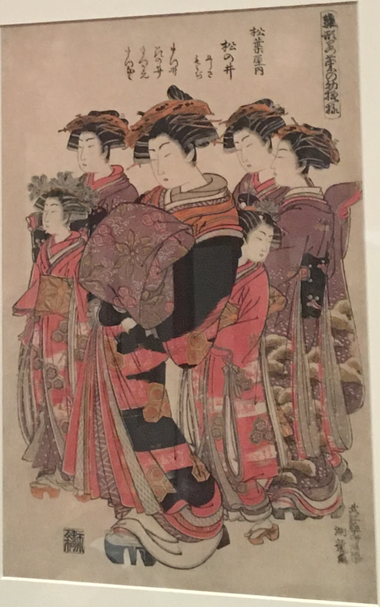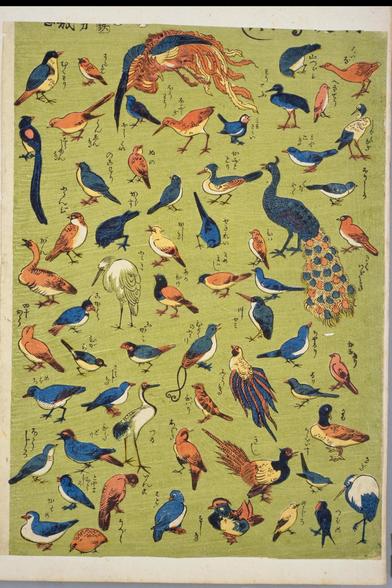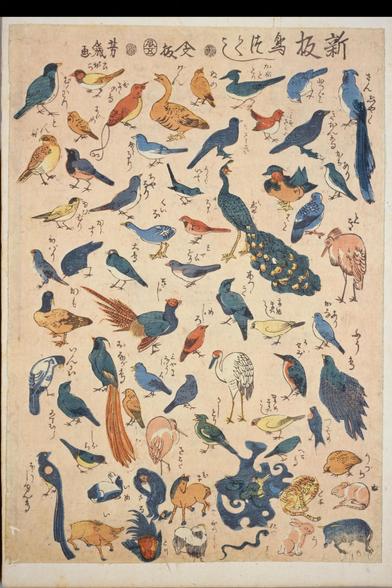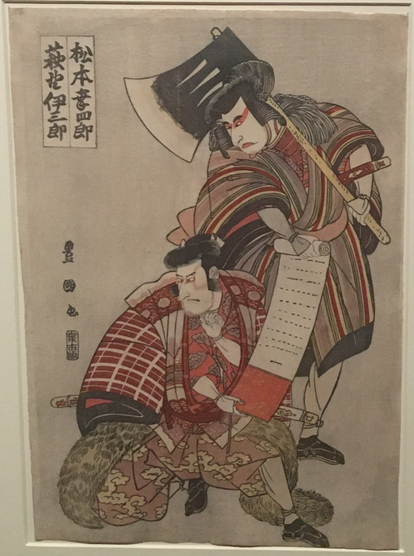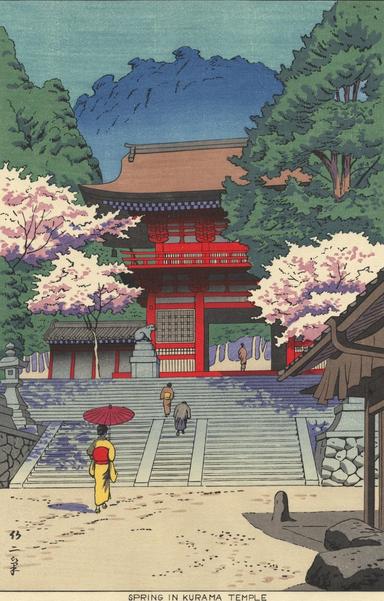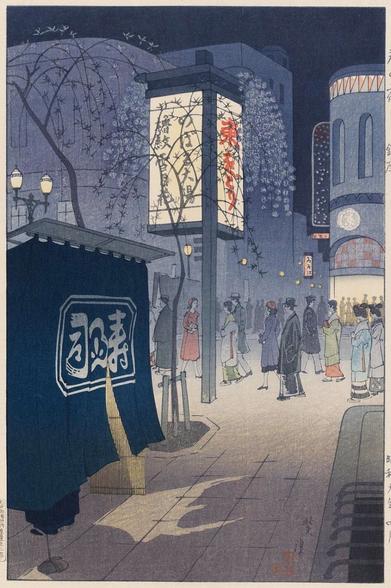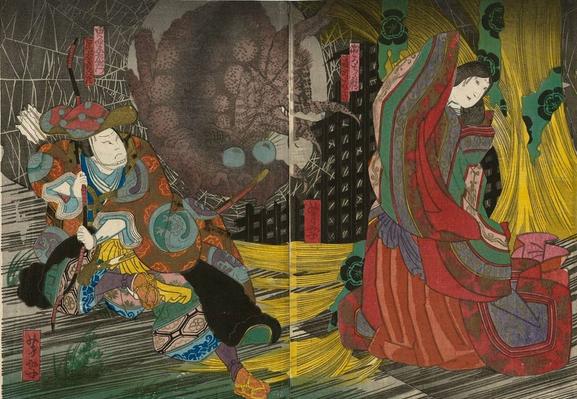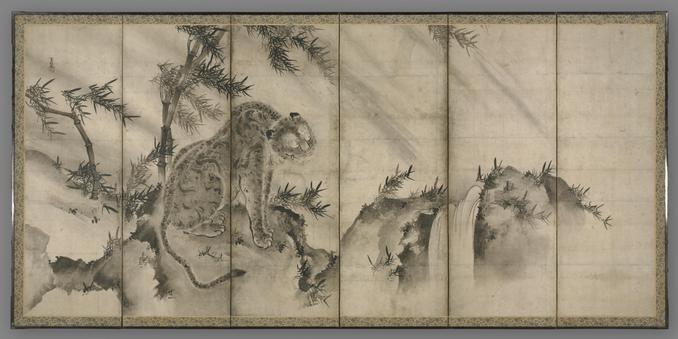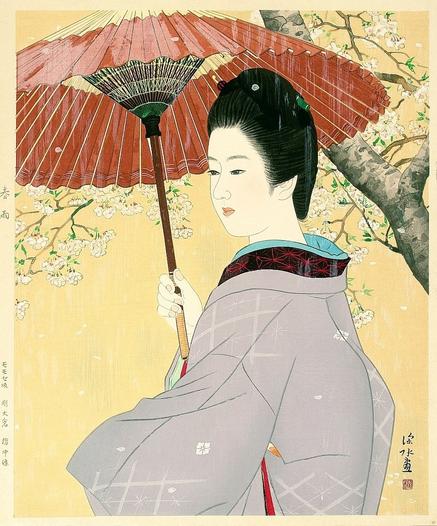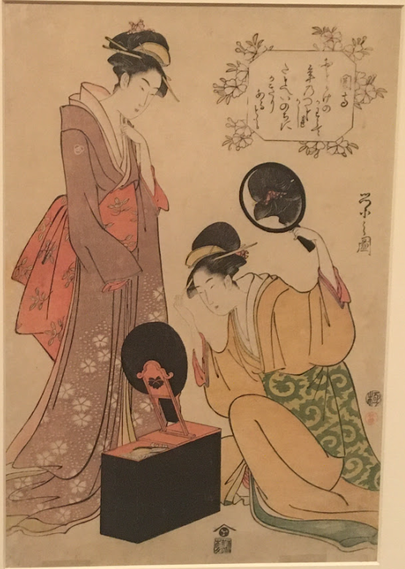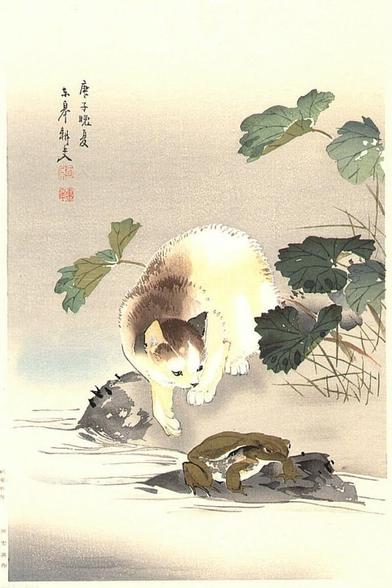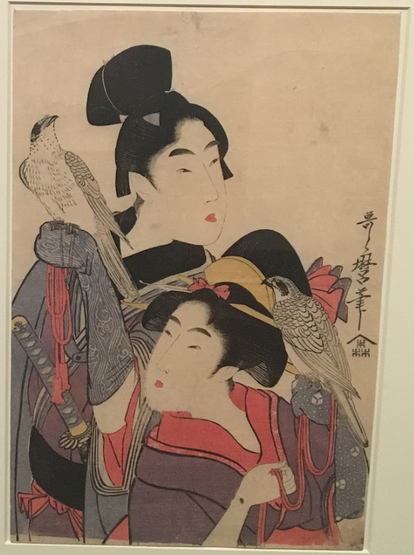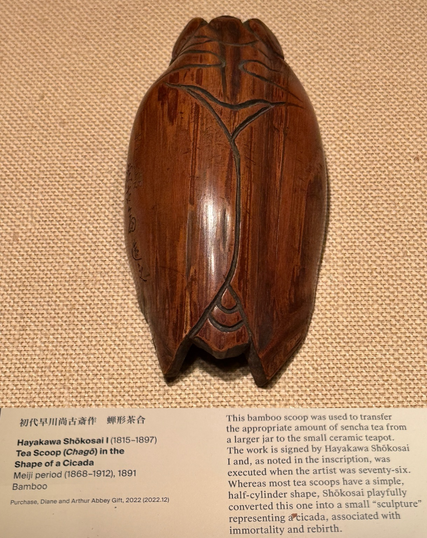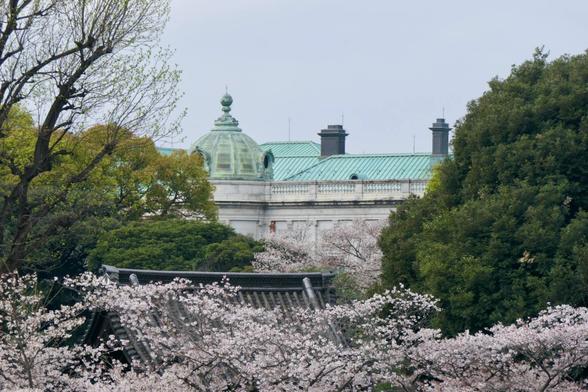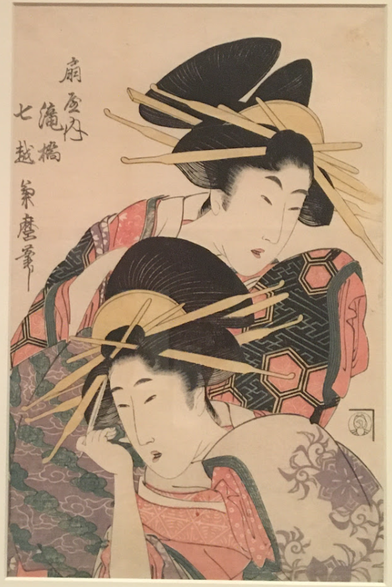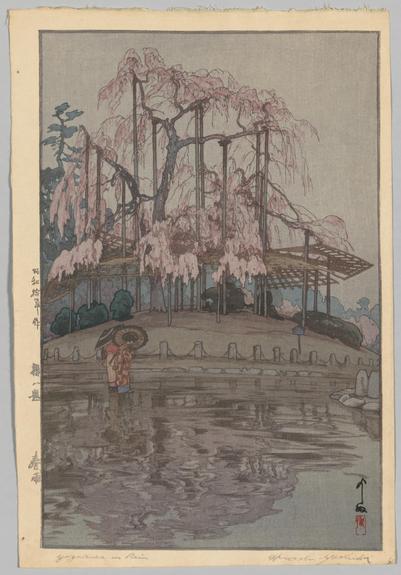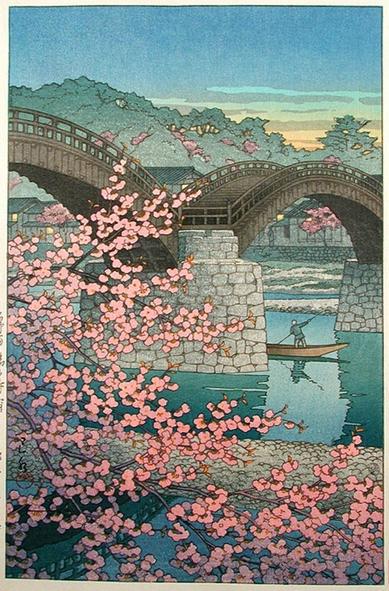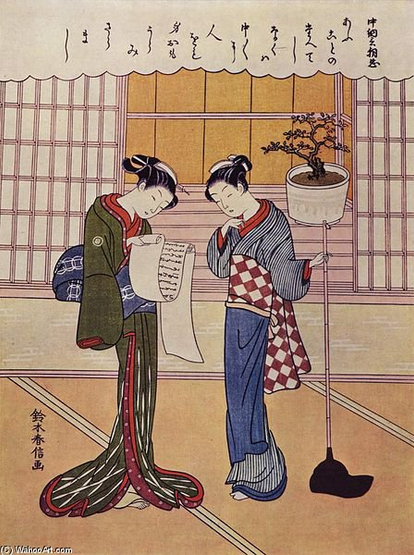"Two Girls on a Porch," Suzuki Harunobu, c. 1750.
Little is known of Harunobu (c. 1725 - 1770) other than his art. He was an innovator, the first to do full-color woodblock prints, rather than two or three color prints.
Although a prominent member of the ukiyo-e school, he didn't limit himself to geishas, courtesans, actors, and sumo wrestlers, but also many ordinary people of Edo street life, like street vendors, errand boys, workmen, and others. He often quoted poetry that related to his subject in some way, but also would often poke fun at his subject.
Here we have two young women on a porch; they wear form-fitting kimonos and their hair is in elaborate styles, so according to my sketchy knowledge, that may indicate they're courtesans. That their sashes are tied in the back indicates they were dressed by maids. One holds a broom or mop but is pausing in her labors to look at a scroll held by the other. Is it a poem? A letter from an admirer? Impossible for me to tell, and I don't have access to any translations of the calligraphy, so I can only guess. But it's a nice image anyway.
From the Bechtler Museum of Modern Art, Charlotte, NC\


